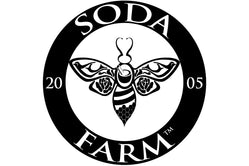Monarch Way Station

As a small farm, we make room for more than just bees and threatened medicinal plants.
The monarch population is declining at such a rate that it is not odd to go a whole summer around here without seeing one. When we were children, the summer was made of them... fluttering in the breeze, leaving their green cocoons in the garden to discover. We want our children to grow up with the same magic of orange butterfly wings, so when we heard about the initiative to certify Monarch Waystations across the country we had to get involved.
In addition to monarchs, the farm is host to a wide array of other butterflies, moths, dragonflies and native pollinators. Watch our Events page for opportunities to take part in citizen scientist initiatives (like monarch counts) that help to preserve our precious pollinators!
Visitors to the farm can see the following:
Monarch Host Plants
Butterfly Milkweed (Asclepias tuberosa) , Showy Milkweed (Asclepias speciosa) , Swamp Milkweed (Asclepias incarnata)
Nectar Plants
Blanket Flower (Gaillardia spp.), Cleome (Cleome spp.), Cosmos (Cosmos spp.), Salvia (Salvia spp.), Thistle (Centaurea and Cirsium spp.), Bee Balm (Monarda spp.), Black-Eyed Susan (Rudbeckia hirta), Blazingstar/Gayfeather (Liatris spp.), Boneset (Eupatorium perfoliatum), Butterfly Bush (Buddleia spp.), Catmint/Catnip (Nepeta spp.), Goldenrod (Solidago spp.), Joe-Pye Weed (Eupatorium purpureum), Mallow (Malva spp.), New England Aster (Aster novae-angliae), Purple Coneflower (Echinacea purpurea), Sedum (Sedum spectabile), Violet (Viola spp.), Vitex (Vitex spp.)
Examples of our Monarch Waystation preserve plants can be found in several of the gardens throughout our property, but many are concentrated in the prairie area near the front of the pond.

